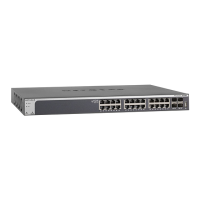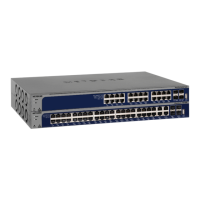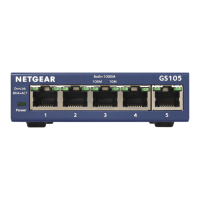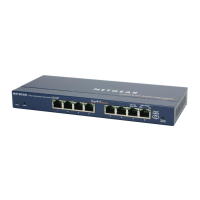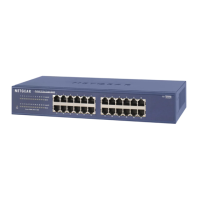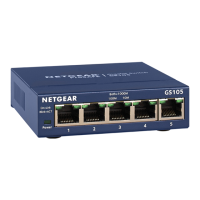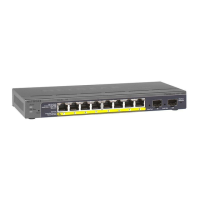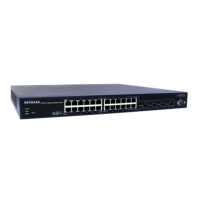Quality of Service
109
XS728T ProSAFE 28-Port 10-Gigabit L2+ Smart Switch
The destination and source IPv6 addresses use a prefix length value instead of an individual
mask to qualify it as a subnet address or a host address. The flow label is a 20-bit number
that is unique to an IPv6 packet, used by end stations to signify some form of Quality of
Service (QoS) handling in routers.
Packets that match an IPv6 classifier are allowed only to be marked using the 802.1p (CoS)
field or the IP DSCP field in the traffic class octet. IP precedence is not defined for IPv6: this
is not an appropriate type of packet marking.
IPv6 ACL and DiffServ assignment are appropriate for LAG interfaces. The procedures
described by an ACL or DiffServ policy are equally applicable on a port or LAG interface.
To configure an IPv6 class:
1. Select QoS > DiffServ > Advanced > IPv6 Class Configuration.
2. Enter the new class name.
3. Select the class type, and click Add.
The switch supports only the Class Type value All, which means all the various match
criteria defined for the class must be satisfied for a packet match. All signifies the logical
AND of all the match criteria.
4. Click Apply to save the class. Configuration changes take effect immediately.
5. To configure this class, proceed to To configure an IPv6 class: on page 109.
To configure the class match criteria:
1. In the IPv6 Class Configuration screen, click on the name of the class (which is a
hyperlink).
When you click a class name, the configuration part of the Class Configuration screen is
displayed. In this part of the screen, you define against which values traffic is checked
when this class is applied.
2. To define the criteria to associate with a DiffServ class, select one or more of the following
check boxes and enter the following data:
• Match Every. Select All to add a match condition to the specified class definition
whereby all packets are considered to belong to the class. In this case, no other field
can be configured.
• Protocol Type. Select a Layer 4 protocol. If you select Other, enter a protocol
number in the field that appears.
• Source Prefix/Length. Enter a valid source IPv6 prefix. A prefix is always specified
with the prefix length. The valid range for a prefix is 0 to
FFFF:FFFF:FFFF:FFFF:FFFF:FFFF:FFFF:FFFF. The valid range for a prefix length is
0–128.
• Source L4 Port. Select a keyword for the known source Layer 4 ports. If you select
Other, enter a protocol number in the field that appears.
• Destination Prefix/Length. Enter a valid destination IPv6 prefix to compare against
an IPv6 packet. A prefix is always specified with the prefix length. The valid range for
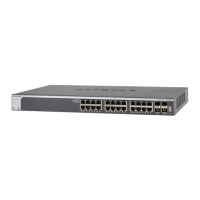
